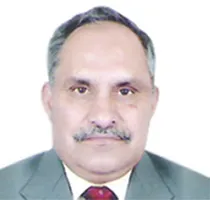-
CENTRES
Progammes & Centres
Location
Legend has it that the nursery rhyme, 'Here we go round the mulberry bush, the mulberry bush...on a cold and frosty morning', was first, sung by women incarcerated at the Wakefield Prison in England while they were doing their daily exercise around the mulberry tree in the prison compound.

Legend has it that the nursery rhyme, 'Here we go round the mulberry bush, the mulberry bush...on a cold and frosty morning', was first, sung by women incarcerated at the Wakefield Prison in England while they were doing their daily exercise around the mulberry tree in the prison compound. This jingle comes to one's mind, when one reads about the firm action taken by the Assam Government and the Union Home Minister after the killing of 81 Adivasis by the Songjit faction of the National Democratic Front of Bodoland in Kokrajhar and Sonitpur districts. It all seems so familiar and repetitive.
In the wake of the killings, a section of the media has sought to blame the Army, as the General Officer Commanding 4 Corps is in operational control of the Unified Command that has been in existence since 1997. What has been conveniently ignored is that it is the Chief Minister who heads the Unified Command and is supported by a strategy group headed by the State's Chief Secretary with members from the police and intelligence community.
The efficacy of this group and its importance to the Chief Minister can be gauged from two facts, that, reportedly, specific actionable intelligence provided was ignored and that the Chief Secretary who was on leave at the time of the incident, did not feel any useful purpose to be served by his return. Thus, it would be fair to deduce that the Unified Command functioning has been restricted to coordinating counter-insurgency operations between the Army, the Central Armed police and the State police, all of this, off course, of a tactical nature.
As we have seen earlier, whether it pertains to the United Liberation Front of Asom or the National Democratic Front of Bodoland or any of the other militant group that has been using violence to gain political control, the State and Central Government has used the Army to subdue militants and to reduce the level of violence and then gone on to politically divide militants and their supporters with either promises of political power or inducements of money. There has rarely been a concerted effort to resolve the issues that have led to the problem in the first place, but to derive political advantage, that would help the ruling party continue in Government. Towards this end, much of the earlier achievements have been nullified by the political leadership and their actions that have invariably permitted many of the militant leaders to walk-free despite the heinous crimes they may have been accused of.
While the Army chief may have no reason to doubt either the genuineness or motive of the Home Minister's directive to the Central Armed Police and paramilitary forces to flush out those responsible for the present outrage, and provide professional expertise required in ensuring that 'operation all-out' is a complete success, he will be well advised to consider asking the political leadership for a written directive specifying the political aim of such an operation and the end state that the Government wants to see. Based on this, the Army can formulate an appropriate response that can ensure a just and equitable resolution of the conflict, rather than another quick fix that will only exacerbate the situation in the long run.
(The author, a retired Army officer, is a consultant with Observer Research Foundation)
Courtesy: The Pioneer, December 30, 2014
The views expressed above belong to the author(s). ORF research and analyses now available on Telegram! Click here to access our curated content — blogs, longforms and interviews.

Brig. Deepak Sinha (Retd.) was Visiting Fellow at ORF. Brig. Sinha is a second-generation paratrooper. During his service, he held varied command, staff and instructional appointments, ...
Read More +